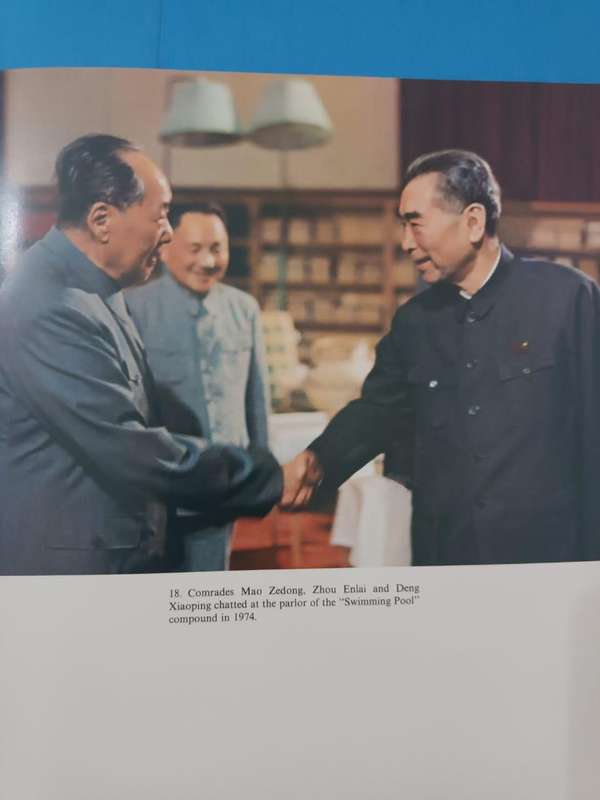


















Zhongnanhai compound, Beijing, adjacent to Forbidden Palace, Beijing
Check my rate
| Main centres: | 1-3 business days |
| Regional areas: | 3-4 business days |
| Remote areas: | 3-5 business days |



















| Main centres: | 1-3 business days |
| Regional areas: | 3-4 business days |
| Remote areas: | 3-5 business days |
Zhong Nan Hai, Beijing - Political Centre of a Country of One Billion (English Edition). Beijing: China Pictorial, 1981.
Quarto, card wrappers, [78] pages, numerous illustrations in monochrome and colour.
Very good condition.
'Zhongnanhai is a compound that houses the offices of and serves as a residence for the leadership of the Chinese Communist Party (CCP) and the State Council. It was a former imperial garden, and is located adjacent to the Forbidden Palace in Beijing. The term Zhongnanhai is often used as a metonym for China's central government and its leadership at large.' (Wikipedia)
'Located west of the Imperial Palace, Beijing, Zhongnanhai (The Central and South Seas) and the adjoining Beihai (The North Sea) were formerly known as Sanhai (The Three Seas). It was also called "Xiyuan" (The West Garden), or "Taiyechi" (The Imperial Pond). It covers an area of some 100 hectares, of which 46 are water surface. First built by rulers of the Liao and Jin kingdoms (916-1234), Zhongnanhai served as a palace for feasting and excursions for the emperors of many dynasties. It was expanded to its present size during the Ming dynasty (1368-1644), but most of the existing buildings were constructed in the Qing dynasty (16441911). After the overthrow of the dynastic rule, it once served as the site of the "Presidential House" and "Chancellery of the Generalissimo" of the Republic. After the founding of the People's Republic in 1949, Zhongnanhai has all along served as the office of the Central Committee of the Chinese Communist Party and the State Council. The Central People's Government was set up here, and the Military Commission of the Party Central Committee once also had its office here. It has been the site of many important historic meetings of the Party Central Committee, the National People's Congress, the State Council, the Chinese People's Political Consultative Conference and the Military Commission of the Party Central Committee. The late Mao Zedong, Zhou Enlai, Liu Shaoqi, Zhu De and some other Chinese proletarian revolutionaries and leading members of the Party Central Committee once lived and worked here. The Party and state leaders also met Chinese and foreign guests here. Some heads of state and leaders of fraternal communist parties of foreign countries also lodged here during their visit. Offices of the Political Bureau and the Secretariat of the Party Central Committee and the State Council remain to be here after the third plenary session of the 11th Party Central Committee. They held their meetings here and many of their leading members continue to live here. Zhongnanhai is not only the centre of the top leading bodies of China but also an important site for mass activities and for contacts with foreign friends.'